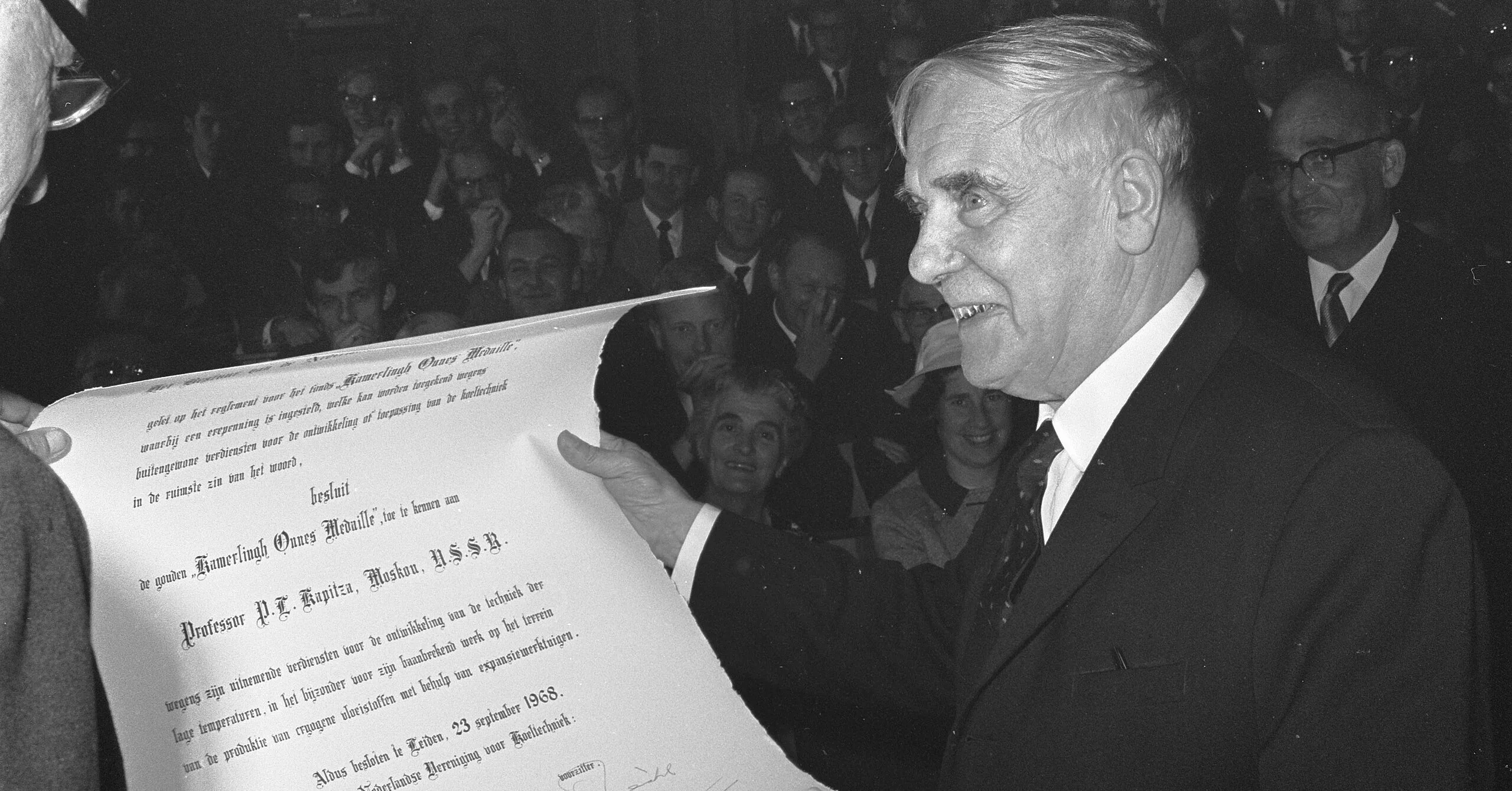There is a story circulating on the Internet about a scientist who allegedly was able to return a complex mechanism to work simply by hitting it with a hammer in the right place and with the right force. We checked how true this story is.
IN blogs And social networks, on popular science websites and in press The remarkable story of Nobel laureate Peter Kapitsa has been retold many times. Its general plot is as follows: one foreign company invited a scientist as a consultant to help deal with the breakdown of a certain machine for a significant fee. Kapitsa agreed, silently studied the faulty machine for a while, and then simply took a hammer and struck one blow, after which the machine started working. In the invoice issued to the owners of the company, Kapitsa assessed his services as follows: “A blow with a hammer - 1 pound. Knowing where to hit is £9,999.” Depending on the source, some details of the story may differ: Kapitsa repaired the car either at an exhibition or directly in the workshop, the customers are called British, Americans or Germans, the company in some versions of the presentation has a name, the fee was in pounds, marks or dollars, its size was slightly different, etc.
Many different legends and anecdotes were told about such a bright person as Kapitsa. One example is as a scientist hit for an internship with Rutherford. At first he did not want to take Kapitsa, citing the fact that he had no space in his laboratory. In response, the Soviet physicist asked what kind of error in experiments Rutherford considered normal. Having heard the answer - 3% - Kapitsa said that adding one more to 30 employees would fit within this error. Rutherford appreciated the joke, and Kapitsa stayed in England for 13 years.
The story about Kapitsa and the hammer became known back in the 20th century. It is, for example, in Gennady Ivanov’s book “Formulas of creativity", published in Moscow in 1994. In July 1974, it was published in the magazine "Ogonyok" great article in honor of the scientist’s anniversary, and its author Evgeniy Dobrovolsky tells this story as follows:
They say that there was such a case when a famous company, it seems, Siemens and Schukkert, asked Kapitsa for advice on why the electric motor of a very important machine was not working. The amount for the consultation was quite substantial - 10,000 marks. Pyotr Leonidovich examined the car, then took a hammer and hit the main bearing: the engine started working.
The company felt offended to pay such money, and it asked the scientist to draw up something like a written calculation. He wrote: “One blow with a hammer - 1 mark, 9999 marks - for knowing where to hit.”
The point here, of course, is not a matter of “Russian eccentricity,” but a brilliant engineering calculation.
This is not the first time Dobrovolsky published this story in Ogonyok. In his book "Kapitsa's handwriting”, published in 1968, the same story is given - however, with a disclaimer at the end: “No one could confirm to me whether such a case happened with Kapitsa.”
Outside the Russian-speaking segment of the Internet, the prevalence of this story is incomparably less: There is just a few publications, and they are apparently translated from Russian. But there are a lot of jokes with the same plot, but with different characters: the role of Kapitsa in them is played by nameless engineers And mechanics, inventors Charles Steinmetz And Nikola Tesla, and in the role of an astonished bill payer - Henry Ford And General George Patton.
Researchers from The Quote Investigator project discovered this story in sources dating back to 1908. Kapitsa was only 14 years old at the time, and he was obviously not mentioned in those publications. However, why did this story in the post-Soviet space end up sticking so firmly to him?
It can be assumed that Kapitsa, who was inclined to joke and tell some amazing story, in one of his public speeches told this anecdote, which he could have heard while in England, but with the subsequent dissemination of the story it was transformed into an incident from his own life.
This hypothesis is confirmed: in the book “Everything simple is true... Aphorisms and reflections of P. L. Kapitsa”, published by the MIPT publishing house in 1994, among the stories and anecdotes told at different times by Kapitsa, there is a text called “A Hammer Strike”:
It happened at a factory in England, where some kind of large machine was built, it seems, a special type of blower. The plant could not put it into use. Engineers spent a long time working on it, the workshops stood still, but the blower did not work.
Finally, the plant director decided that it was necessary to resort to outside forces, and invited a leading specialist for a consultation. The director did not decide to take this step right away, since he was stingy and did not want to spend extra money on inviting large professors, who in England have to pay large sums for consulting. The professor arrived, looked at the car, asked for a hammer or sledgehammer and hit the body of the car several times. Some parts inside must have moved, snapped into place, and the machine started working. The workshops began to operate, the plant came to life. The professor returned home and, according to English custom, sent the director of the plant a bill for 100 pounds sterling, a considerable amount. The director was upset and indignant. “What is this - a man came, hit him with a hammer two or three times and left, and I have to pay 100 pounds for this. We need to knock this professor down,” he decided and sent the scientist a letter in which he delicately asked for a more accurate assessment of his work.
To this he received the following answer: “For coming to the factory and hitting with a hammer,” the professor wrote, “I am entitled to 1 pound sterling, and for the fact that I knew where to hit with the hammer, I should pay the remaining 99 pounds.”
Below the text is the date - 1944. A short search allowed us to find the original source: it was a fragment of Kapitsa’s speech to a group of party and economic leaders in 1944. The full text of his speech, entitled “On the role of science in the Patriotic War,” was published, in particular, in 1985 in May issue magazine "Science and Life", dedicated to the 40th anniversary of the victory in the Great Patriotic War. It was not possible to establish when exactly and on what occasion this speech by the Soviet physicist took place.
Thus, the story of Kapitsa and the hammer blow is a kind of urban legend that exists in many versions in different languages and appeared even before the Nobel laureate began his academic career. Apparently, Kapitsa publicly told this story, which he heard while working in England, but with the further dissemination of the tale, the narrator turned into a hero.
Cover photo: Fotograaf Onbekend / Anefo via Wikimedia Commons
- The Quote Investigator. Knowing Where To Tap
- Russian Academy of Sciences. "Pyotr Leonidovich Kapitsa. Memories, letters, documents»
- Is it true that Sergei Kapitsa is the author of the phrase about a society in a state of deep hypnosis?
If you find a spelling or grammatical error, please let us know by highlighting the error text and clicking Ctrl+Enter.






